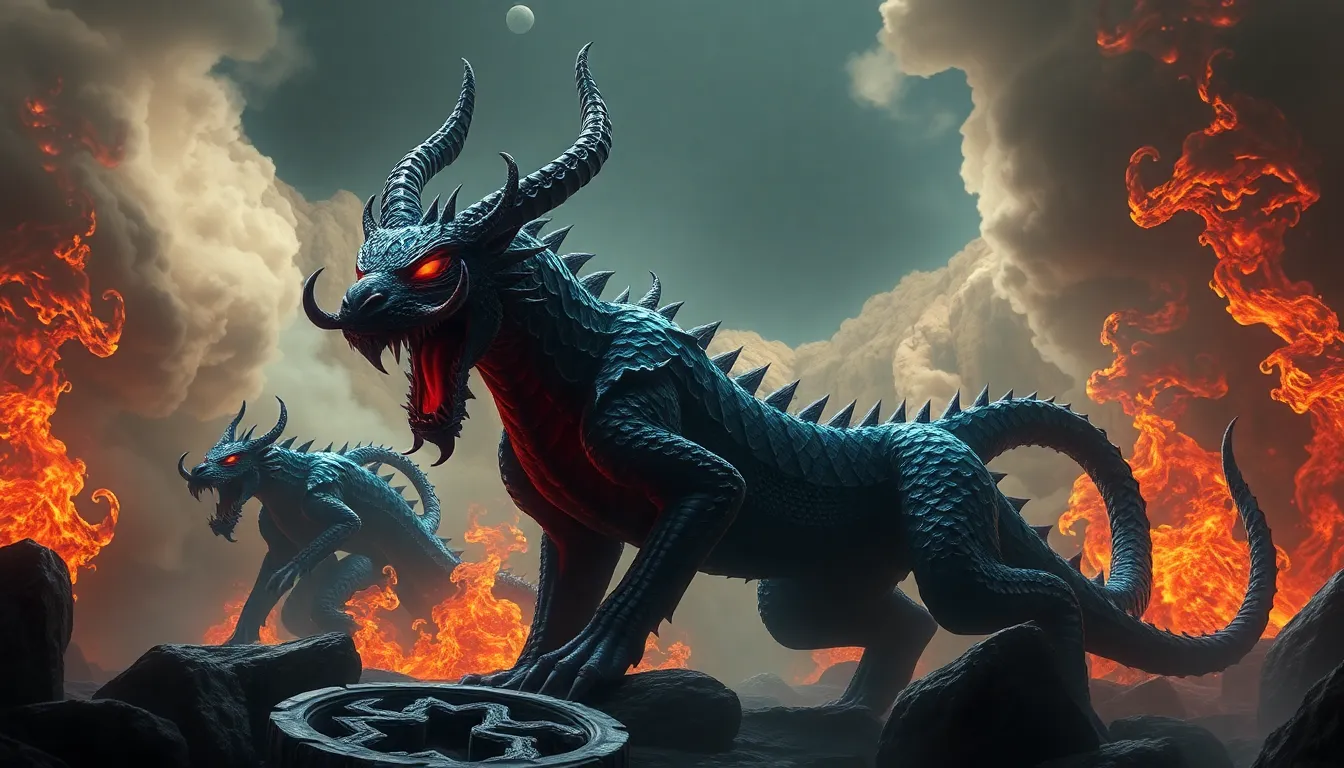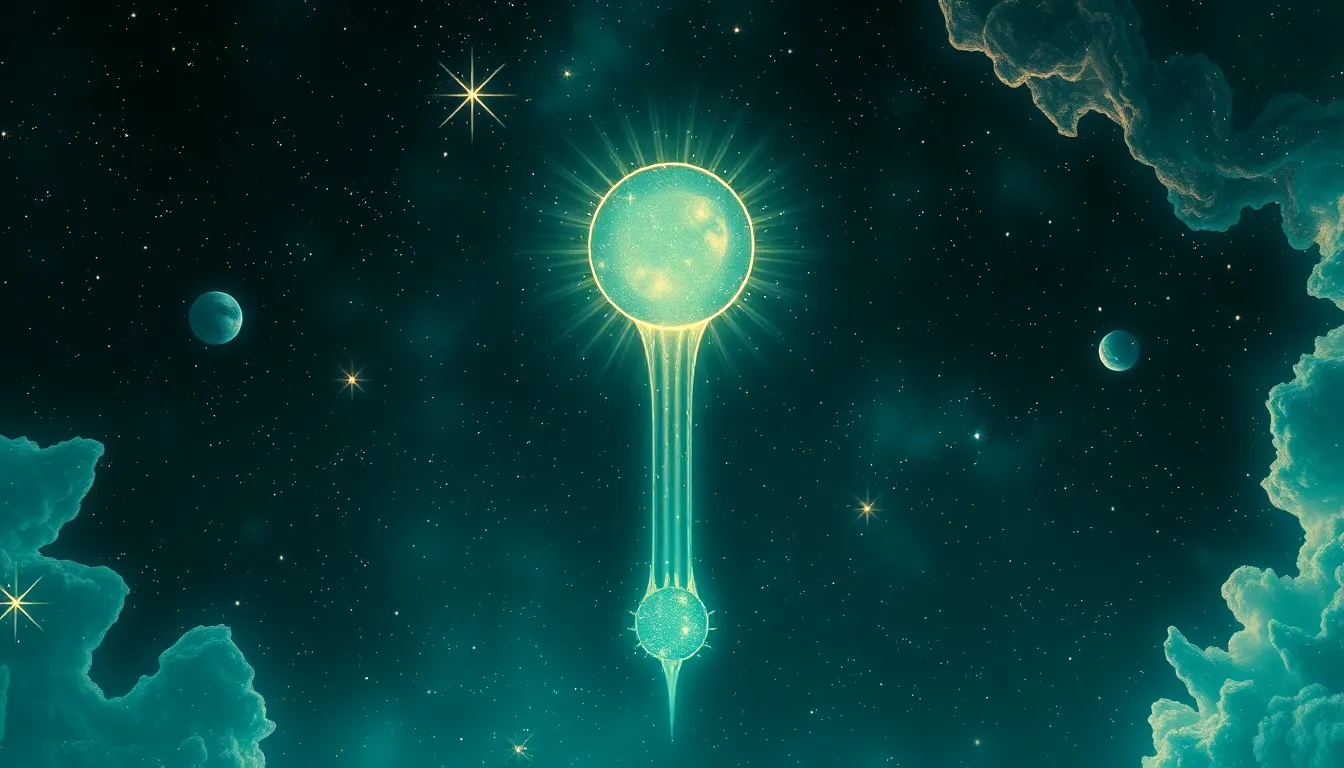The Most Eerie End of the World Myths from Different Cultures
Introduction
Apocalyptic myths are narratives that describe the end of the world or a significant transformation of existence, often reflecting a culture’s fears, values, and hopes. These myths serve as profound cultural touchstones, shaping and being shaped by the identities of the societies that tell them. They reveal how different peoples perceive the cosmos, morality, and the fate of humanity. This article explores some of the most eerie end-of-the-world myths from various cultures, highlighting their unique features and underlying messages.
The Norse Ragnarok: The Final Battle of Gods
In Norse mythology, Ragnarok represents the culmination of a series of events leading to the end of the world, characterized by a great battle between gods and giants. This apocalyptic event holds significant meaning for the Norse people, signifying both destruction and renewal.
Key figures involved in Ragnarok include:
- Odin: The Allfather and chief of the gods, who seeks knowledge and sacrifices himself for wisdom.
- Thor: The god of thunder, known for his strength and his struggle against the serpent Jörmungandr.
- Loki: The trickster god whose betrayal leads to the chaos of Ragnarok.
The myth illustrates a cyclical nature of destruction that ultimately leads to rebirth, where the world is reborn anew, symbolizing hope and continuity despite the inevitable chaos.
The Aztec Fifth Sun: A Cycle of Creation and Destruction
The Aztec cosmology is marked by the belief in multiple suns, each representing a different age of creation. The current era is known as the Fifth Sun, which is prophesied to end in catastrophe. This cycle of creation and destruction is central to Aztec identity and spirituality.
The implications of the prophesied end for humanity are profound:
- The world will end in earthquakes, signaling the return of the gods.
- Human sacrifices are believed to be necessary to appease the gods and stave off disaster.
The Aztecs viewed this cycle as a part of a greater cosmic order, where the actions of humanity directly influenced the fate of the world.
Hindu Kali Yuga: The Age of Darkness
In Hinduism, time is understood as cyclical, divided into four Yugas: Satya Yuga, Treta Yuga, Dvapara Yuga, and Kali Yuga. Currently, humanity resides in Kali Yuga, the age of darkness and moral decline.
Signs of the impending end in Kali Yuga include:
- Widespread corruption and dishonesty.
- Loss of spirituality and virtue.
However, Hindus believe that the end of Kali Yuga will not be absolute. The arrival of Kalki, the tenth avatar of Vishnu, is prophesied to restore righteousness and bring about a new cycle of creation.
The Christian Apocalypse: Revelations and the Second Coming
The Christian concept of the apocalypse is primarily derived from the Book of Revelation, which outlines a series of catastrophic events leading to the Second Coming of Christ and the final judgment of humanity.
Key themes include:
- The rise of the Antichrist, a figure representing ultimate evil.
- The final judgment, where souls are evaluated and sent to heaven or hell.
Throughout history, interpretations of the apocalypse have varied widely, influencing both theology and popular culture, while instilling a sense of urgency and hope among believers.
The Hopi Prophecies: The Blue Star Kachina
The Hopi people of North America possess rich spiritual traditions, including prophecies about the end times. One significant prophecy speaks of the Blue Star Kachina, a celestial being that will signal the onset of purification and transformation for humanity.
The symbols of purification include:
- The return of harmony with nature.
- The necessity for humanity to reflect on its actions and seek renewal.
The Hopi believe that their ceremonies and way of life can influence the outcome of these prophecies, emphasizing a profound connection between humanity and the cosmos.
The Maya Calendar: Misinterpretations and Realities
The Maya civilization had a complex understanding of time, encapsulated in the Long Count calendar. This calendar tracks cycles of creation and is often misinterpreted as predicting an apocalypse in 2012.
Common misconceptions include:
- The belief that the calendar predicts the end of the world.
- The idea that the end of a cycle signifies an absolute termination.
In reality, the Maya viewed cycles as part of a continuous process of creation and renewal, reflecting their deep connection to the rhythms of nature.
The Islamic End Times: Signs of Qiyamah
In Islamic eschatology, the end times, or Qiyamah, are marked by significant signs that indicate the approach of the Day of Resurrection. This belief underscores the moral and ethical responsibilities of believers in the present life.
Key figures in Islamic end times narratives include:
- Mahdi: The guided one who will restore justice and righteousness.
- Isa (Jesus): His return to defeat falsehood and uphold truth.
These beliefs emphasize the importance of faith and the consequences of human actions in the context of divine judgment.
Ancient Greek Mythology: The Return of Chaos
In ancient Greek mythology, Hesiod’s Theogony describes a cycle of ages, culminating in a decline from a golden age to a chaotic end. This narrative reflects the Greeks’ understanding of the world as being subject to cycles of order and disorder.
Key themes include:
- The concept of a decline from a state of harmony to chaos.
- The eventual return of the Titans, representing a return to primordial chaos.
This myth serves as a reminder of the fragility of civilization and the inevitable return to chaos that follows periods of order.
Conclusion: The Cultural Significance of Apocalyptic Myths
Apocalyptic myths from various cultures serve not only as cautionary tales but also as reflections of each society’s values, fears, and aspirations. These narratives encapsulate the human experience of change, loss, and renewal, reinforcing the idea that endings often pave the way for new beginnings. Through the lens of these myths, we gain insight into the diverse ways cultures grapple with the concept of the end, ultimately revealing a shared human concern for meaning and continuity in the face of uncertainty.



